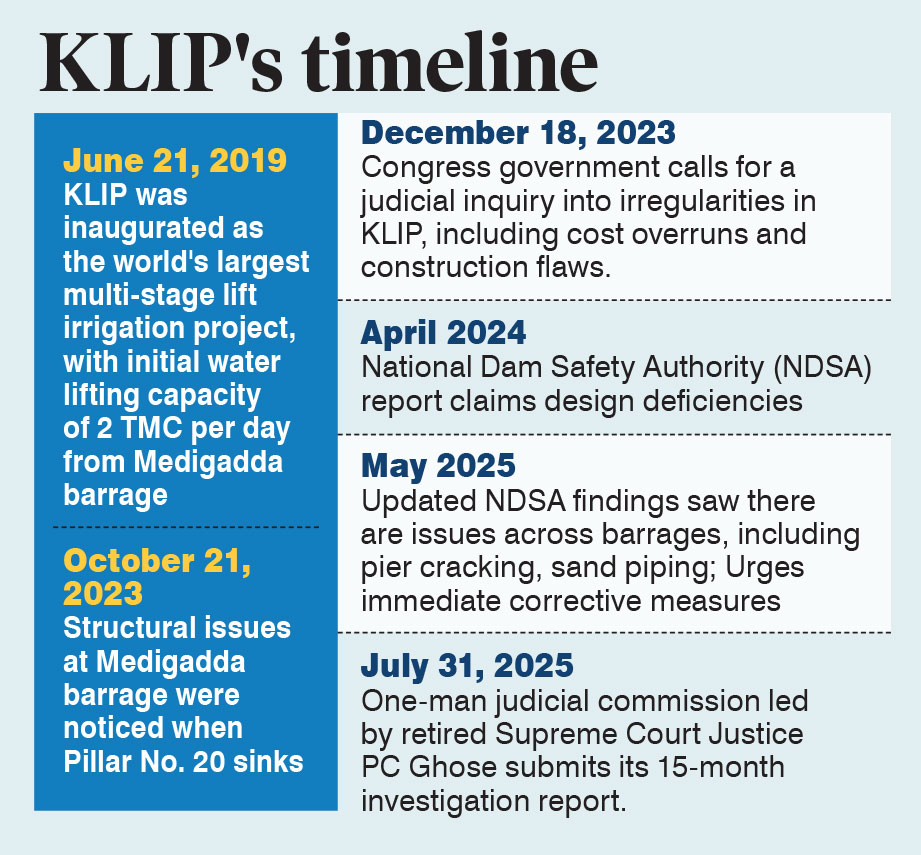Two years after collapse, Congress govt moves to restore Medigadda barrage
Two years after the collapse of piers at Medigadda barrage, the Telangana government has initiated rehabilitation efforts by inviting EOIs for design proposals. The move, timed ahead of local body elections, follows damning findings by the National Dam Safety Authority (NDSA), which recommended urgent structural fixes across KLIP barrages.
Published Date - 1 October 2025, 09:52 PM
Hyderabad: Exactly two years after the sinking of piers at Medigadda barrage, the State government has initiated its first step towards rehabilitating the project by inviting Expressions of Interest (EOI) for rehabilitation designs.
Significantly, this move comes just ahead of the local body elections, with the Congress government projecting itself as working on a roadmap to make the three barrages functional.
Following its investigations into the structural issues in the Kaleshwaram Lift Irrigation Project (KLIP) barrages, the NDSA made key recommendations with primary focus on Block 7 of Medigadda. It wanted to decommission or stabilize Block 7 due to issues with the raft and two of its piers. Block 7 is to be either dismantled, or stabilized without impacting adjacent blocks.
As part of the process it highlighted the need for filling subsurface cavities by incorporating soil-structure interaction. The NDSA also recommended measures to evaluate the barrage’s safety, including upstream and downstream cut-off walls and hydro-mechanical elements, to prevent issues like sand piping.
With regard to Annaram and Sundilla barrages, it recommended immediate strengthening measures as part of a broader rehabilitation plan to restore functionality. As part of the general recommendations for all three barrages, it also stressed the need for investigations into geotechnical, hydrological, hydraulic, geophysical, and structural aspects, including detailed soil investigations and secant pile assessments.
It also favoured installation of comprehensive monitoring systems, such as piezometers (midstream, and downstream) and other sensors, for real-time detection of anomalies.It further called for proper O&M manuals to prevent future failures. These recommendations aim to ensure long-term safety and prevent future risks.
